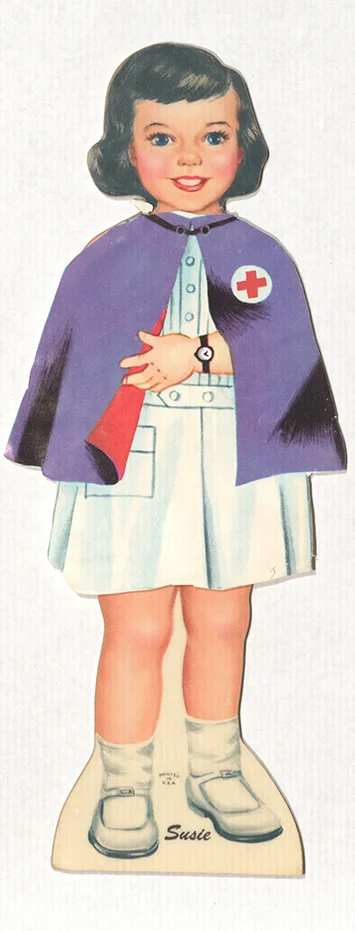 Image. Paper doll Susie
Image. Paper doll Susie
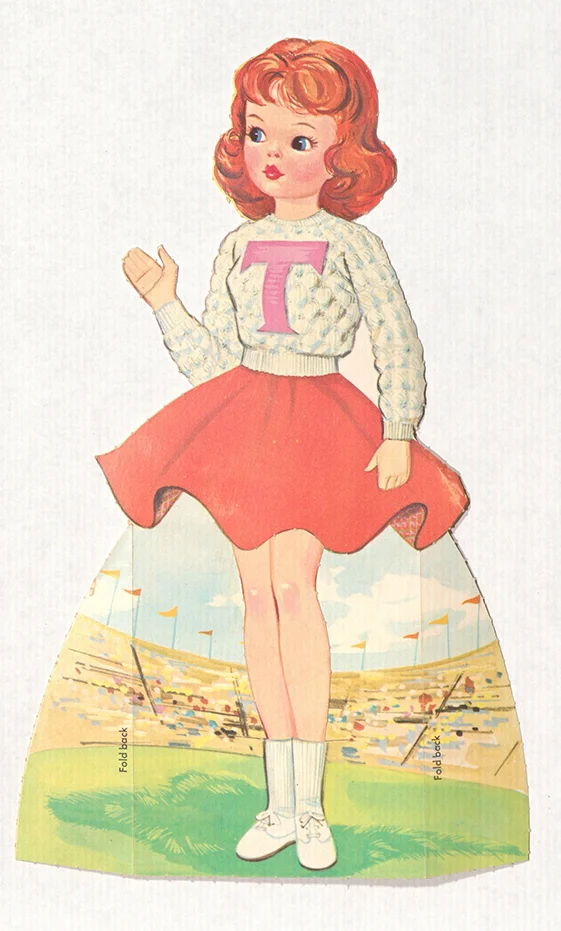 Image. Cheerleader paper doll
Image. Cheerleader paper doll
Almost as long as humans have made paper, they have made paper dolls. Existing examples can be dated all the way back to 900 C.E. Japan. Paper dolls as we know them with a fashion element of changing clothes can be traced back to France in the mid eighteenth century. The paper doll really took off in the nineteenth century with manufacturing innovations dropping the price of paper and causing the explosion of the printing industry.
Paper dolls were not always children’s toys. Those popularized in the mid 1700’s would often show pieces for tradespeople showing off their wares without having to tote full sized dresses, wigs, or hats. They were used to showcase the latest fashions and are a very useful artifact to study fashion and feminine ideals, even, and perhaps, especially those made for children. They are products not only to be consumed as a cheap toy but also printed freely in newspapers and magazines as toys and as advertisements. Though they published paper dolls only once, the November 1859 issue of Godey’s Lady’s book was the first periodical magazine to include such dolls. The magazine featured one page of dolls that could be colored in by the child, and then a page of brightly colored costumes to be cut and placed on the toys.
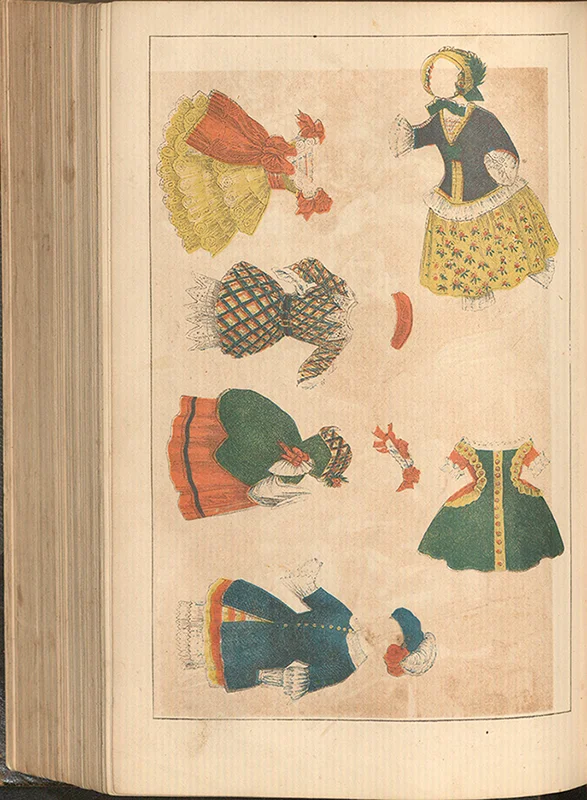 Image. Colored clothing attire.
Image. Colored clothing attire.
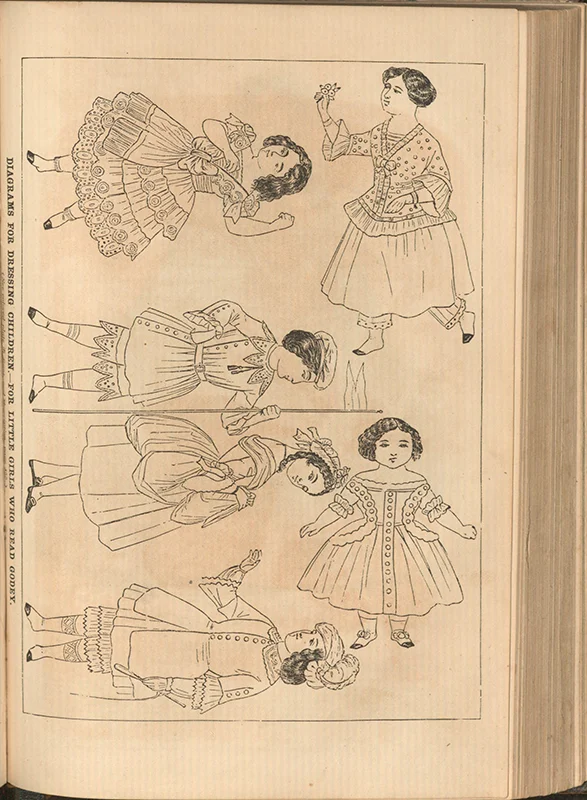 "Diagrams for Dressing Children—For Little Girls Who Read Godey"
"Diagrams for Dressing Children—For Little Girls Who Read Godey"
The caption under the dolls instructs you where to find the colored plate featuring the clothing and also to turn to page 455 for a description. The book instructs cutting the figures out to then be pasted onto card. Then cut slits in the tops of the dresses and the ends of the sleeves to slide them onto your figurines. They then inform that they would also make good patterns for children’s clothes.
Many following magazines like Ladies’ Home Journal and Good Housekeeping regularly featured paper dolls for decades.
Children learn through play, so these dolls were outfitted with the ideals of the woman of leisure and were aspirational in their extensive wardrobes and many different scenarios that could be played out. They became especially popular between the 1930’s-1950’s. During the Great Depression they were a toy anyone could afford, and that popularity lasted through the supply shortages of WWII and the post-war period. Most of these paper dolls hail from this golden age. They were teaching tools as well as toys. The cost and availability meant a child could have dozens of dolls teaching things like the traditional dress of foreign cultures, to those from history to the latest fashions for the modern girl.
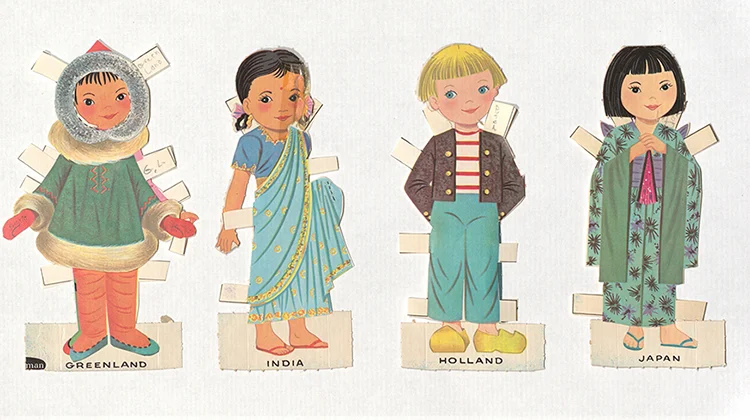 Image. Traditional attire of Greenland, India, Holland, and Japan
Image. Traditional attire of Greenland, India, Holland, and Japan
 Image. Traditional attire of Scotland, Spain, Peru, and Switzerland
Image. Traditional attire of Scotland, Spain, Peru, and Switzerland
 Image. Historical attire paper dolls
Image. Historical attire paper dolls
Many dolls were similarly sized so the clothing could easily be shared between brands.
 Image. Paper doll girl-1 wearing
Image. Paper doll girl-1 wearing
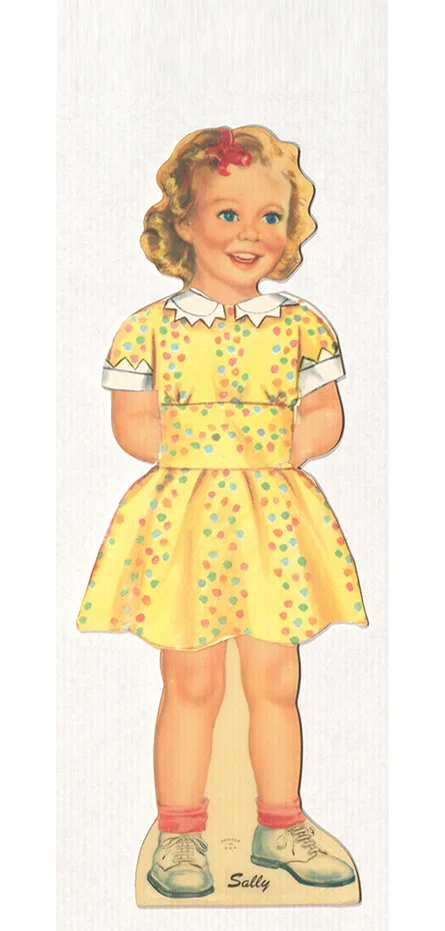 Image. Paper doll Sally
Image. Paper doll Sally
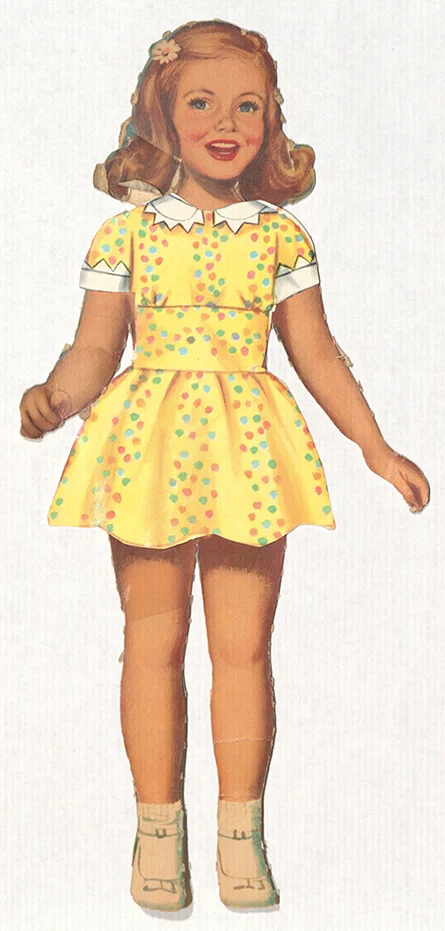 Image. Paper doll girl-1 without coat
Image. Paper doll girl-1 without coat
Some credit Barbie with the decrease in popularity for paper dolls, but they are still a widely available toy and a great tool for learning about the ideals and fashions of both the past and the present.
Resources
- Johnson, Judy. "History of Paper Dolls." The history of paper dolls, December 2005. https://www.opdag.com/history.html.
- Hale, Sarah, and Godey, Louis, eds. "Godey’s Lady’s Book." Godey’s Lady’s Book and Magazine 59, November (1859).
- "History of Paper Dolls and Popular Culture." National Women’s History Museum, November 20, 2016. https://www.womenshistory.org/articles/history-paper-dolls-and-popular-culture.
- Samford University Special Collection, Lovegren Collection (unprocessed)


